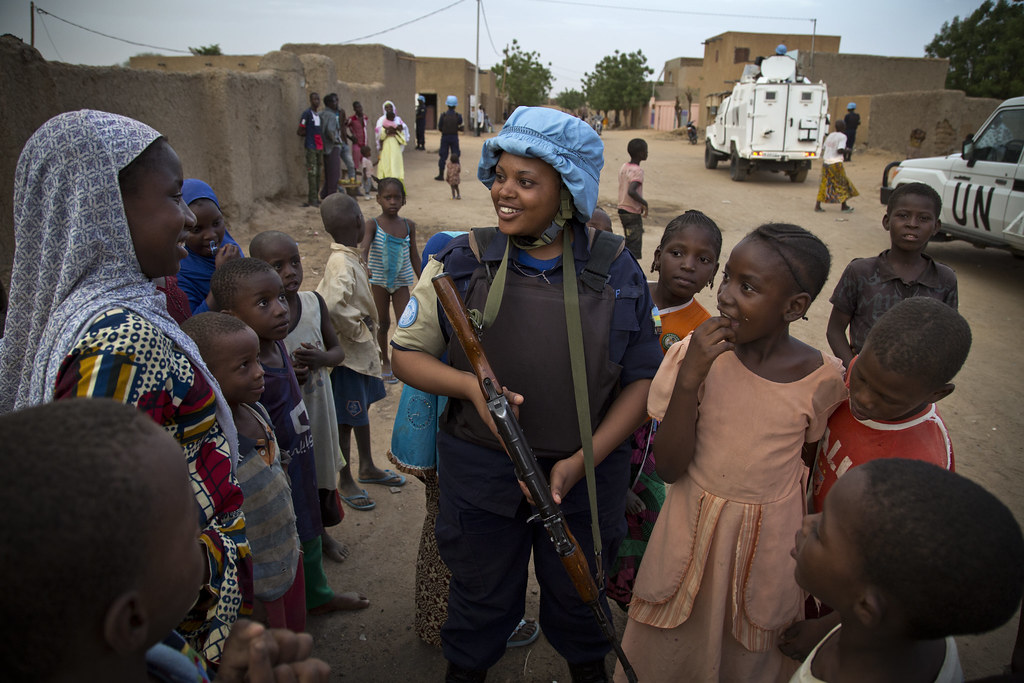The term “Imazighen” is a plural noun that represents the diverse groups of people indigenous to North Africa, pre-existing the Arab conquest of the late seventh century C.E. that is often more quaintly described as the origin of North African “Arabization”. The singular form of this noun is “Amazigh,” denoting “free people” in its indigenous language – Tamazight. Many who have no immediate contact with Amazigh cultures are more inclined to refer to Imazighen as “Berbers”, a term that anyone who identifies as Amazigh will know implies more derogatory connotations associated with its historical meaning: “barbarians”. Such negative nuances extend to everyday scenarios, and most pertinently to the current intensifying situation in Northern Mali.
The vibrant Amazigh cultures stretch from the far east of the Egyptian deserts to the vast plains of Mauritania in the West. Just east of Mauritania lies the Northern Malian region of Azawad, formerly proclaimed as an independent state in 2012 by the National Movement for the Liberation of Azawad (MNLA). In this region resides a population of the Tuareg, an Amazigh group of over two million that spans vast areas of the Sahara in southwestern Libya, southern Algeria, Niger, Mali, and Burkina Faso. The Tuaregs who call Northern Mali home have endured the impacts of post-colonial underdevelopment since Mali’s independence from a century of French colonial rule in 1960. The Amazigh are a resilient people, having preserved cultural traditions and ways of life from the threats of the Roman Empire through to Muammar Qaddafi’s infamous Pan-Arabist persecution of the Libyan Amazigh.
Apart from the obvious issues posed by such instances of clear anti-Indigeneity, what else would cause a population of Malian Tuaregs to form their own National Movement for Liberation, now that Mali has been a sovereign state for over sixty years? The current problem lies in the 2015 Algiers Peace Agreement that outlines the “need to accelerate economic, social, and cultural development in Northern Mali”. That is, the condition of this peace agreement has yet to be realized, and so the Tuareg rebels of Northern Mali have resorted, once again, to armed struggle.
Some on-looking scholars have criticised the Malian government’s neglect to implement the Agreement’s commitments as the driving reason behind the MNLA’s increasing militancy. After deconstructing the contents of the Agreement and the use of ingratiating egalitarian language, however, it becomes clear that how Tuareg-Mali issues were addressed may be the real cause of the present conflict. In the overture of this grand proclamation that would outline the Principles, Commitments, and Foundation For a Sustainable Resolution of The Conflict in just one section, little over two double-spaced pages, the Agreement prefaces its conditions with the true center of interest: “the national unity, territorial integrity and sovereignty of the State of Mali”. As the first of eight vague and holistic principles, it is made instantly clear that the Tuareg community of Northern Mali will not be considered as a separate people from the constituents of Southern Mali. The Agreement’s first promise for a “sustainable resolution of the conflict” is therefore already void.
Further instances of transparent ignorance appear consistently throughout the Agreement. This is notably evidenced in the unwillingness to humanize the Tuareg people of Northern Mali (referred to in Chapter 2 as the “Azawad denomination”), almost exclusively referring to this dynamic and proud community as statistical “populations” and “constituent components” of the true Malian “national community”. Not only does this ignore the contemporary foundation of the Azawad-Mali conflict, but also the practical and continuous implications of historical colonialism. From the beginning of the French colonization of Mali in the late nineteenth century, Saharan Tuareg groups consistently resisted the French military. On the horizon of Malian independence in 1958, 300 Tuareg chiefs petitioned for the independence of their own Amazigh communities, but to no avail. Mali’s independence from colonial France witnessed the colonial power’s brutal segregation of Tuareg communities, fragmented across freshly cut geographical borders that resembled nothing of the societies the Amazigh tribes had built over millennia. This very displacement, paired with a series of harsh droughts in the 1970s and 1980s, would cause the future underdevelopment of Northern Mali and Malian Tuareg society.
By considering the rich history and irrepressible strength of the Tuareg people, quantifying the Tuareg’s presence and right to self-government in Northern Mali as mere demographic “components” ultimately strips the Agreement of any integrity as a “sustainable solution”. The stressed importance of Malian state “sovereignty” no doubt, and understandably, originates in a sense of national fragility associated with many post-colonial nations. However, by ingraining this insecurity into the foundation of an intended peace agreement between a maltreated minority of Indigenous people and a national majority, the entirety of the Agreement’s contents is sequentially stripped of any efficacy. The promises made by the Malian government to the “cultural diversity” and social equality of the nation and “all the people of Mali” were broken before they were even consolidated by international law.
Edited by Susana Baquero Salah

Amira Berdouk is in her first year at McGill University, currently pursuing a B.A. in East Asian Studies and International Development. Amira is a staff writer at Catalyst and is interested in (neo-) colonialism, political and cultural identity, and independence movements.

